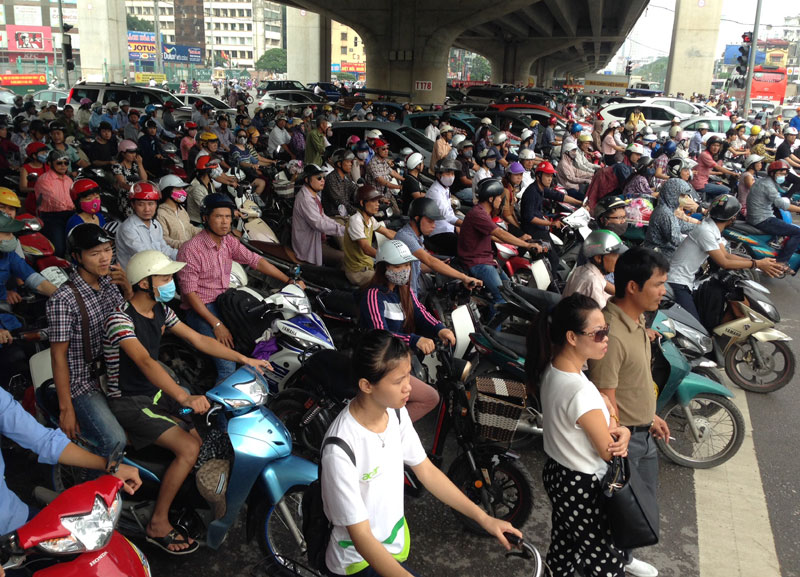VietNamNet Bridge - Hanoi currently has more than 5 million motorcycles and the figure will reach 11 million by 2025. The city has planned to ban private vehicles in 2025.

Director of the Hanoi Department of Transportation Vu Van Vien said recently that Hanoi authorities discussed the plan to ban motorcycles in 2025.
The plan was at the top of the agenda for Hanoi’s Party Committee’s program 06 draft on developing the city’s transportation network, which was discussed this morning.
Bicycles and motorcycles are the most popular means of transport chosen by the locals. As the city’s population soars, the number of private vehicles in operation has continued to rise in recent years.
According to the program, one key task put forward by local authorities is to focus all forces on urgent transportation projects to ensure traffic safety and reduce congestion.
Participants in the discussion agreed that Hanoi’s urban infrastructure system had yet to meet the demands of rapid urban development. Public means of transport can meet only part of the demand, while traffic congestion is still common and accident statistics remain high.
Vien said reducing and finally banning private vehicles is the general trend of the modern urban areas in the region and the world. When urban development reaches a certain level, a roadmap to gradually reduce personal vehicles and prohibit motorcycles in the inner areas is necessary. China is a good example.
"Hanoi does not learn from others and apply their measures, but the city is on the verge of huge traffic congestion,” Vien said.
Currently there are more than 5.5 million private vehicles, including 500,000 cars and more than 5 million motorcycles in the city. With the growth rate of individual vehicles of 10% a year, by 2025 Hanoi will have about 11 million motorcycles.
Thus reducing private vehicles, and banning motorcycles in urban areas is inevitable, Vien said.
According to the plan approved by the Government, by 2020, public transport in Hanoi will have to satisfy 25% of the people’s travel demand and up to 35-40% in 2025.
So, to replace private vehicles, means of public transport must be improved.
Vien said Hanoi will develop public transport systems in parallel with reducing private vehicles.
As part of the plan to develop the city’s transport system, the local authorities will work with the Transport Ministry to complete procedures and kick off investment in State-funded transportation projects, such as interprovincial bus stations that reduce the burden on inner-city bus stations.
Last year, the city’s People’s Council agreed on a project that would cost an estimated VND2.2 billion (US$91,000), aimed at reducing traffic congestion.
At an online conference at the end of last year that included government workers and representatives of the country’s 63 provinces, Chairman Chung proposed the government should work with Hanoi to reduce the number of personal vehicles on the road in order to eliminate traffic congestion.
Vu Diep